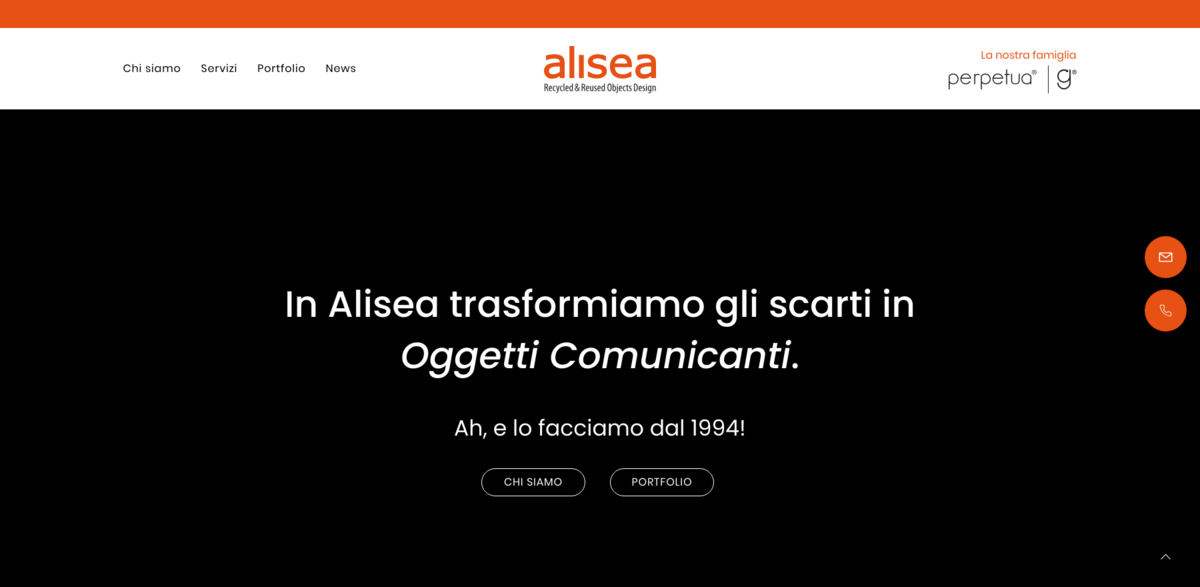What Is Alisea and Its Vision?
Alisea is all about transforming waste into communicative objects. Since 1994, this innovative company has been pioneering a circular and transformative design approach, rooted in the belief that a product is never just an end—it’s a byproduct of the need to explore new paths. These paths are carved through recovery, recycling, and the continuous innovation of materials, processes, and ideas. Their mission? To inspire positive behaviors in the circular economy and create objects that truly have something to say.
Main Benefits and Key Facts
Alisea’s impact is impressive, and here’s a quick snapshot:
- Founded in 1994, making it a pioneer in circular economy practices.
- Operates through ethical supply chains built in four tailored steps: sharing, design, transformation, and regeneration.
- Holds a B Corp certification, scoring 106.5, reflecting high social and environmental standards.
- Recognized with the Seal of Excellence by the European Commission under the Horizon 2020 program.
- Adopted the legal status of “Benefit Company” in 2019, embedding sustainability into its core statute.
- Works closely with Cooperativa Agape La Fraglia to promote social inclusion, especially for people with disabilities.
Brands and Unique Offerings
Alisea operates through several distinctive brands, each with its own focus. ALISEA RECYCLED AND REUSED OBJECTS DESIGN creates customized design objects by recovering and recycling scraps and waste—sometimes even using materials provided by customers themselves. Then there’s PERPETUA, which specializes in turning graphite powder—an unavoidable waste from electrode and diamond tool production—into elegant design objects. And finally, G-UPGRADED, which develops symbiotic economy projects with partners, focusing on circular innovation starting from recovered graphite. Together, these brands showcase Alisea’s commitment to innovation and sustainability.
Commitment to Social Sustainability
Social sustainability is at the heart of Alisea’s operations. The company partners exclusively with production facilities equipped with cutting-edge technologies aimed at reducing environmental impact. Beyond that, Alisea actively contributes to social inclusion by collaborating with Cooperativa Agape La Fraglia, which supports people with all types of disabilities. This approach ensures that their circular economy model isn’t just green but also genuinely inclusive.
Certifications and Recognition
Alisea’s dedication to balancing profit and purpose has earned it several prestigious certifications. The B Corp certification, for instance, is awarded to companies meeting rigorous standards of social and environmental performance, transparency, and accountability. This means Alisea doesn’t just focus on shareholders but considers the impact of its decisions on all stakeholders. Additionally, the Seal of Excellence from the European Commission highlights the company’s excellence in research and innovation, especially within the Horizon 2020 framework. These recognitions underscore Alisea’s leadership in sustainable design and circular economy innovation.
Project Impact on Sustainable Development Goals (SDGs)
- SDG 9: Industry, Innovation, and Infrastructure – through continuous R&D and circular innovation.
- SDG 12: Responsible Consumption and Production – by promoting recycling and reuse of materials.
- SDG 8: Decent Work and Economic Growth – via ethical supply chains and inclusive partnerships.
- SDG 13: Climate Action – through reducing environmental impact in production processes.
- SDG 10: Reduced Inequalities – by fostering social inclusion for people with disabilities.
Alisea’s Story and Future Outlook
The story of Alisea began with a simple yet profound moment: the CEO, Susanna Martucci, overheard a conversation on a train about the looming problem of waste management. That moment sparked a journey that has lasted decades, driven by a passion for change and innovation. Today, Alisea continues to push boundaries, creating projects that didn’t exist before and generating human, social, and environmental value through design. It’s not just about products—it’s about inspiring a shift towards a truly circular economy, where waste becomes opportunity, and innovation meets responsibility.





















